Ethereum Classic: The Immutable Legacy of Blockchain
Ethereum Classic (ETC) is one of the most fascinating stories in the cryptocurrency world. Born in 2016 during a defining crisis, it represents more than just a digital asset. For its community, ETC embodies a principle at the very core of blockchain: immutability. The idea that once data is written on the ledger, it must never be altered.
This principle, summed up in the mantra “code is law,” places ETC alongside Bitcoin and Litecoin as one of the classic anchors in crypto history. While Ethereum Classic may not enjoy the same popularity as its sibling Ethereum (ETH), its existence continues to remind the industry of blockchain’s original ideals.
The DAO Hack and the Birth of Ethereum Classic
In the spring of 2016, Ethereum was a revolutionary platform, introducing smart contracts and decentralized applications to a global audience. Among the most ambitious projects built on Ethereum was The DAO — a decentralized autonomous organization designed to act as a venture capital fund governed entirely by code. The project raised more than 11 million ETH from over 18,000 investors, making it one of the largest crowdfunding efforts of its time.
But on June 17, 2016, disaster struck. A hacker exploited a flaw in The DAO’s code, draining 3.6 million ETH, valued at nearly $50 million at the time. The event shook the crypto world and sparked one of the most controversial debates in blockchain history.
The Ethereum community faced a choice:
-
Fork the chain: Reverse the hack, restore the stolen funds, and reassure investors.
-
Keep the chain intact: Preserve immutability, even if that meant leaving the theft recorded forever.
The majority voted for the fork, which created what we know today as Ethereum (ETH). The minority who rejected intervention continued on the original chain, which became Ethereum Classic (ETC).
The Philosophy of “Code Is Law”
Ethereum Classic was born out of principle. Its supporters believed that altering the blockchain set a dangerous precedent. If one exception could be made, what would stop future rollbacks for other reasons? To them, the core value of blockchain technology lies in its immutability.
-
Ethereum’s path: Flexibility, prioritizing user trust and ecosystem growth.
-
Ethereum Classic’s path: Rigid adherence to immutability, where the blockchain is supreme and human intervention is unacceptable.
This ideological divide defined the split. Ethereum Classic embraced its role as the guardian of the original chain, refusing to rewrite history, no matter how painful.
A Place Among the Classics
To understand ETC’s significance, it helps to compare it to the earliest cryptocurrencies:
-
Bitcoin (BTC): The original digital gold, immutable since 2009.
-
Litecoin (LTC): The silver to Bitcoin’s gold, an early fork that maintained Bitcoin’s spirit.
-
Ethereum Classic (ETC): The unaltered Ethereum, preserving the original chain after the DAO crisis.
Just as Bitcoin and Litecoin serve as historical reference points for cryptocurrency’s origins, Ethereum Classic stands as a reminder of Ethereum’s unedited past. It shows what happens when a community chooses principle over popularity.
Ethereum Classic After the Merge
In 2022, Ethereum transitioned from proof-of-work (PoW) to proof-of-stake (PoS), a monumental change in its consensus mechanism. This left Ethereum Classic as the largest proof-of-work smart contract blockchain still in operation.
This continuity matters. Like Bitcoin, ETC is mined with computational power and has a fixed monetary policy: its maximum supply is capped at 210.7 million ETC. These rules cannot be changed arbitrarily, reinforcing ETC’s commitment to predictability and decentralization.
Although ETC no longer commands the same attention as Ethereum, it remains valuable for miners, developers, and purists who see it as the embodiment of blockchain’s foundational promise.
Challenges and Resilience
Ethereum Classic’s journey hasn’t been easy. The network has endured multiple 51% attacks, most notably in 2019 and 2020, which temporarily undermined its credibility. In response, the community strengthened its mining algorithm and security features. Despite these hurdles, ETC survived, proving its resilience.
Every challenge reinforced the philosophy that ETC exists to uphold: immutability above convenience. This survival has cemented its reputation as a blockchain that refuses to compromise on principles, even when under pressure.
Why Ethereum Classic Still Matters
Ethereum Classic’s importance is not measured in market capitalization alone. Its true value lies in its historical and philosophical role:
-
It preserves the unbroken history of the Ethereum blockchain from its genesis.
-
It reminds the crypto world that decentralization is meaningless without immutability.
-
It demonstrates how governance choices can fundamentally shape a blockchain’s destiny.
For many, Ethereum Classic is not just another project; it is a living experiment in governance. It forces us to ask: should we place trust in the collective judgment of people, or in the unchanging certainty of code?
Conclusion
Ethereum Classic is a monument in crypto history. Born from controversy, it has stood the test of time by holding firm to its core principle: the blockchain is untouchable.
By refusing to rewrite its past, ETC has become a symbol of integrity in the crypto space, even if it meant losing popularity to Ethereum. Like Bitcoin and Litecoin, it serves as a historical anchor, reminding us where the movement came from and why it exists.
In a world where blockchains evolve rapidly, Ethereum Classic remains steadfast, asking a timeless question: Do we trust human judgment, or do we trust the code itself?














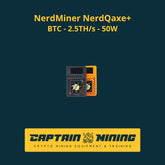
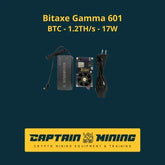
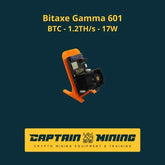
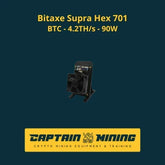
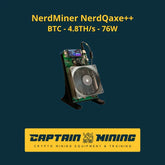

Leave a comment
Please note, comments need to be approved before they are published.